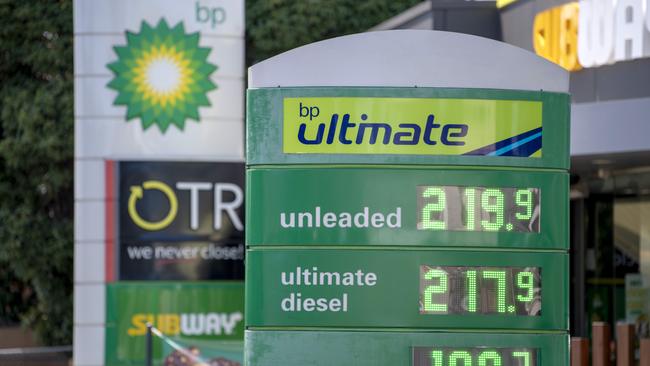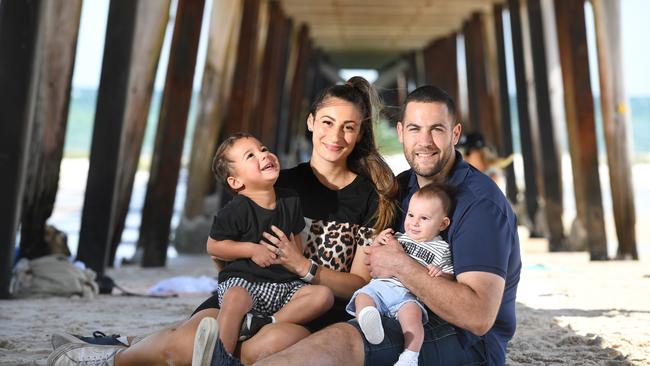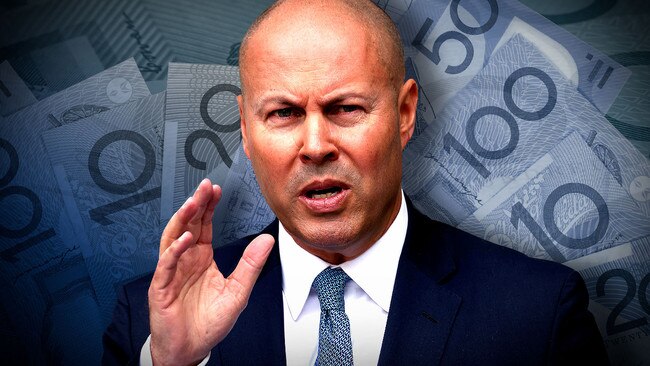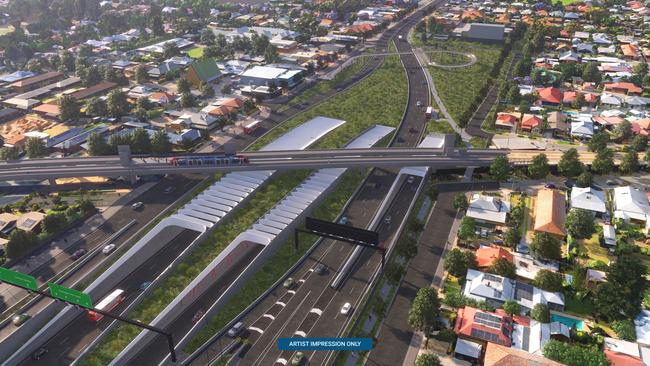Federal budget 2022: Frydenberg’s big spend puts more money in your pocket
Petrol prices will be cut and money pumped into the pockets of low-and-middle income South Aussie earners in a big-spending election-eve Federal Budget. See the six key takeaways.
SA News
Don't miss out on the headlines from SA News. Followed categories will be added to My News.
Fuel prices will be cut and money pumped into the pockets of low-and-middle income earners to ease escalating pressure on households in a big-spending federal budget engineered as an election springboard.
In temporary living cost cuts unveiled by Treasurer Josh Frydenberg, fuel excise will be halved, a $250 payment sent to six million people and a $420 tax offset delivered to groups including pensioners and job seekers.
The six-month cut to fuel excise will mean a typical Adelaide family sedan will cost about $13 less to fill with petrol.
The moves aim to ease pain from petrol and food price spikes triggered by Russia’s invasion of Ukraine and rising costs caused by worker and supply chain pressures during the Covid-19 pandemic.
READ MORE: FEDERAL BUDGET 5-MINUTE GUIDE

In a drive to tackle skilled worker shortages, an extra 800,000 training places will be created, new apprentices will get $5000 payments and their employers up to $15,000 in wage subsidies.
Declaring “events abroad” were “pushing up the cost of living at home”, Mr Frydenberg said he was delivering “practical measures that will make a difference”.
“Higher fuel, food and shipping costs are increasing inflation and stretching household budgets,” he said.
“ … For the next six months, Australians will save 22 cents a litre every time they fill up their car. A family with two cars who fill up once a week could save around $30 a week – or around $700 over the next six months.

“Whether you’re dropping the kids at school, driving to and from work or visiting family and friends, it will cost less.”
The halving of fuel excise, from 44.2 cents per litre to 22.1 cents per litre, came into effect from midnight Tuesday.
The excise cut, which Mr Frydenberg said would flow through to motorists within a fortnight and end on September 28, has been forecast to cost the budget $8.3bn in foregone payments and receipts.
Mr Frydenberg vowed the Australian Competition and Consumer Commission would “monitor retailers to make sure these savings are passed on in full”.
While welcoming the cost-of-living savings, SA Treasurer Stephen Mullighan said he was also disappointed.
“Some disappointing news is that South Australia has once again missed out on some of the key funding pools which had been announced in recent years by the coalition government,” Mr Mullighan said on radio on Wednesday morning.
“The new $7.1bn regional fund which was announced last night, there’s no money for South Australia.
“We got very little money out of the $3bn national water grid funding pool, I think we only got about one per cent of that funding.”

TAX RELIEF
The one-off $420 cost-of-living tax offset will benefit more than 10 million low and middle-income earners.
This means people already getting the low and middle-income tax offset will now receive up to $1500 and couples up to $3000.
Pensioners, carers, veterans, job seekers, eligible self-funded retirees and concession card holders will get the one-off $250 payment within weeks.
Existing indexation means a single pensioner will get more than $500 extra in the next six months.
CHEAPER MEDICINES
In a further move to ease household costs, an estimated 2.4m people will be able to access cheaper medicines through a reduction in Pharmaceutical Benefits Scheme safety net thresholds.
From July 1, patients on concessions will reach the safety net with about 12 fewer scripts – and two fewer scripts for general patients.

EMPLOYMENT
Seeking to “write a new chapter in Australia’s economic story”, Mr Frydenberg boasted that the nation’s four per cent unemployment rate was heading towards a 50-year low.
“We have a historic opportunity to get young Australians into skilled, secure and well-paid jobs,” he said.
This would be spurred by the $2.8bn plan to increase training take-up and completion rates, with the $5000 payments for apprentices and employer wage subsidies.
From Tuesday night, a $120 tax deduction has been made available for every $100 spent by small businesses on training.
A similar deduction is now available for small businesses spending on digital technologies, such as cloud computing, cyber security and web design.
INFRASTRUCTURE
Almost $18bn is shovelled into infrastructure spending, of which $2.9bn is earmarked for SA. This is headlined by $2.3bn for the Adelaide’s North-South road corridor from Darlington to Anzac Hwy.
Another $200m is slated to eliminate traffic bottlenecks caused by tram crossings at the Marion and Cross roads intersection, at the northwestern tip of the marginal seat of Boothby.
Regional SA will miss out on a huge $7.1bn cash splash on rural areas, with funding instead being pumped into the NT, Queensland, WA and NSW to create a “new frontier” of growth in the outback.

THE GST
A surge in Australians shopping has vastly increased the GST pool from $75.5bn this year to $83.89bn next financial year.
SA can expect to rake in $7.3bn in 2022-23, a $574m increase from this year.
GST payments to SA will continue to rise at a steady pace, but this is expected to drop off significantly after 2026 when top-up payments to states under the “no worse-off guarantee” dry up.
Mr Frydenberg said the GST carve-up would be reviewed “at the appropriate time”.
Budget papers forecast the economic recovery from Australia’s first recession in almost 30 years to continue, with the national unemployment rate forecast to reach 3.75 per cent per cent in the September quarter – the lowest rate since 1974.
THE BOTTOM LINE
Mr Frydenberg said a stronger economy meant the budget could be repaired without increasing taxes, pointing to a $78bn deficit for 2022-23 reducing to $43.1bn by 2025-26.
Net debt as a share of the economy is expected to peak in mid-2026 at 33.1 per cent, when the total figure is forecast to be $864.7bn.
“We live in uncertain times. The last two years have been tough for our country, there have been setbacks along the way,” Mr Frydenberg said.
“But Australia remains resilient. Australia remains strong.
“We have overcome the biggest economic shock since the Great Depression. Our recovery leads the world.”




